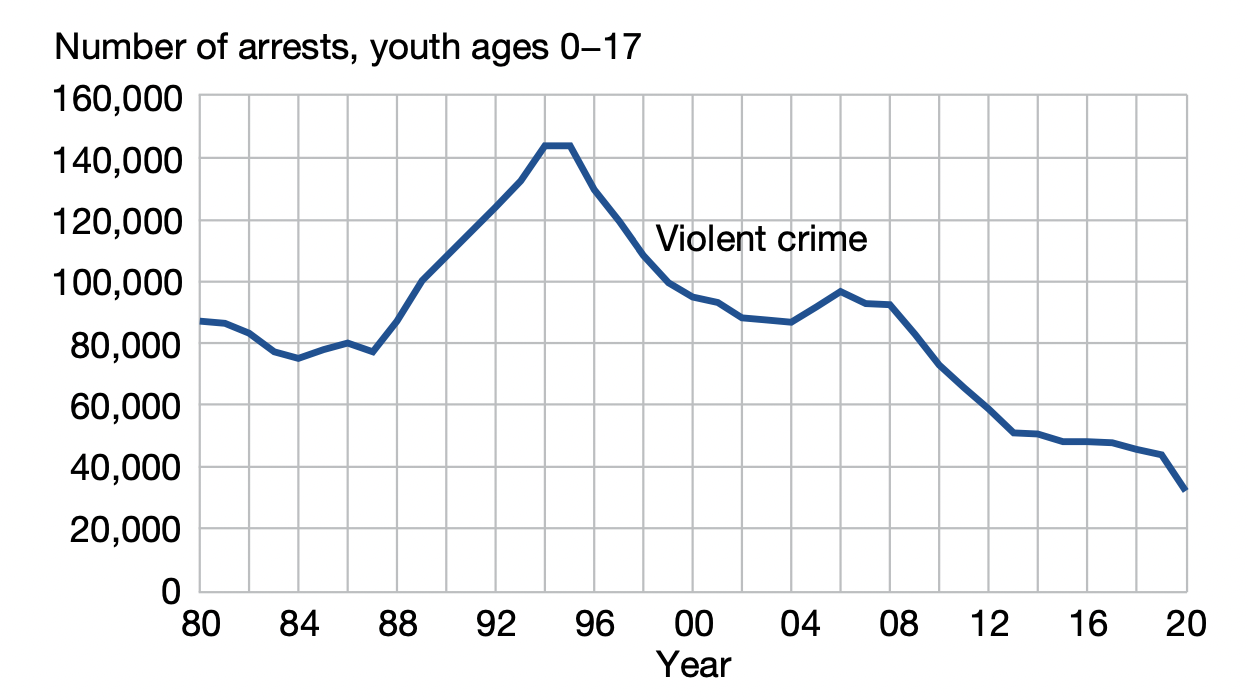9.1. Trends in Youth Offending
Alison S. Burke and Kate McLean
Since the early 1990s, America has witnessed an increase in the fear of youth crime. [1] Sensationalized media exposure in the 1990s facilitated the public’s fear of juvenile offenders and “super-predators”, which resulted in get tough legislation and a perceived need to “do something” about youth crime. [2] Juvenile courts were criticized for their inability to control youth crime and, as a result, policies shifted from rehabilitation to the punishment of juvenile offenders. [3] This shift included an increase in the number of states that adopted new legislation or revised their previous statutes to facilitate the transfer of youthful offenders from juvenile court to criminal court to be tried as adults. [4]
Given recent media coverage around surging violence in the United States, you may be surprised to learn that youth arrests for violent crime have fallen dramatically over the last 15 years; in fact, from 2006 to present, such arrests have fallen 67 percent! Moreover, the a declining proportion of all youth arrests involve a violent offense. Take a look at the below chart created by the Office for Justice Programs, which shows a positive trend over nearly two decades.

The Myth of the Superpredator
Politicians across the political spectrum were responsible for popularizing the pernicious myth of youthful “super predators” in the 1990s, a myth that spawned a dramatic increase in the punishment of young offenders – with few positive results. Explore the Marshall Project’s archive on the super predator phenomenon, including videos, new clips, and an interactive timeline.
- Benekos, P., & Merlo, A. (2004). Controversies in juvenile justice and delinquency. Anderson Publishing. ↵
- Myers, D.L. (2001). Excluding violent youth from the juvenile court: The effectiveness of legislative waiver.New York: LBF Scholarly Press. ↵
- Feld, B.C. (2001). Race, youth violence, and the changing jurisprudence of waiver. Behavioral Sciences & the Law, 19(1), 3-22. ↵
- Snyder, H. N., & Sickmund, M. (2006). Juvenile offenders and victims: 2006 National Report. Washington, DC: U.S. Department of Justice, Office of Justice Programs, Office of Juvenile Justice and Delinquency Prevention ↵

